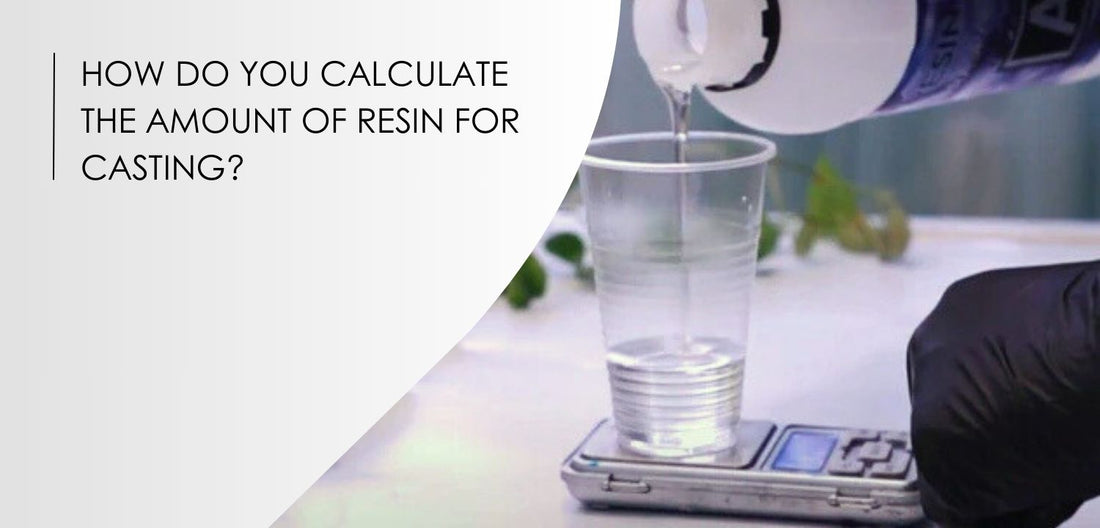
How do you calculate the required amount of resin for casting?
Share
At the beginning of working with epoxy resin, the question arises: "How do you calculate the required amount of resin for casting?"
Carefully read this article, it will help you understand this important issue.
To calculate the amount of epoxy resin, we need to calculate the area of the product. And to make it easier to navigate, let's break down the calculation using examples.

Example 1 - Mold of a round shape with a diameter of 11 cm.
For the calculation, we use the formula:
S = π × r2 × 0.5 × 1.2
where r - is the radius (remember that the radius is half the diameter), π - is a constant approximately equal to 3.14
0.5 - is the height of your product, typically it is 0.5 cm
1.2 - is the density coefficient of epoxy resin
Calculation: 3.14 × 5.5 × 5.5 × 0.5 × 1.2 = 57 grams
Thus, the minimum weight of resin for filling a mold with a diameter of 11 cm is 57 grams (total weight of components A + B). Don't forget about the mixing proportions for each type of resin.

Example 2 - Mold in the shape of a "Grenade" with a diameter of 12.5 cm.
For the calculation, we will use the same formula as in Example 1.
S = π × r2 × 0.5 × 1.2
Calculation: 3.14 × 6.25 × 6.25 × 0.5 × 1.2 = 73.6 grams
But in the grenade form, there is also a small tail, so an additional 15 grams should be added to the result obtained.
Thus, the minimum weight of resin for filling a mold in the shape of a "Grenade" with a diameter of 13 cm is 89 grams (total weight of components A + B). Don't forget about the mixing proportions for each type of resin.

Example 3 - Mold of square shape 12 × 12 cm.
For the calculation, use the formula:
S = a × b × 0.5 × 1.1
S - area; a, b - length and width
0.5 - is the height of your product, typically it is 0.5 cm
1.1 - is the density coefficient of epoxy resin
Calculation: 12 × 12 × 0.5 × 1.1 = 79 grams
Thus, the minimum weight of resin for filling a mold 12 × 12 cm is 79 grams (total weight of components A + B). Don't forget about the mixing proportions for each type of resin.

Example 4 - Calculation of the finishing layer for a product with a diameter of 11 cm.
For the calculation, use the formula:
S = π × r2 × 0.15
where r - is the radius (remember that the radius is half the diameter), π - is a constant approximately equal to 3.14
0.15 - coefficient
Calculation: 3.14 × 5.5 × 5.5 × 0.15 = 14.2 grams
To apply the finishing layer to a product with a diameter of 11 cm, 14.2 grams of epoxy resin (total weight of components A + B) will be required. Don't forget about the mixing proportions for each type of resin.

Example 5 - Work on a board with a diameter of 30 cm.
For the calculation, use the formula:
S = π × r2 × 0.15
where r - is the radius (remember that the radius is half the diameter), π - is a constant approximately equal to 3.14
0.15 - coefficient
Calculation: 3.14 × 15 × 15 × 0.15 = 106 grams
Thus, the minimum weight of resin for working on a board with a diameter of 30 cm will be 106 grams (total weight of components A + B). Don't forget about the mixing proportions for each type of resin.
This calculation allows determining the amount of epoxy resin to apply one layer of 1.2-1.5 millimeters to a board/base with a diameter of 30 cm. If the pouring technique is complex or done step by step, a calculation should be made taking into account the additional resin consumption.